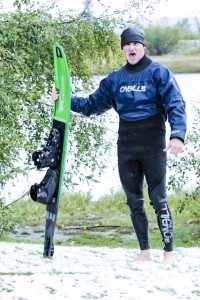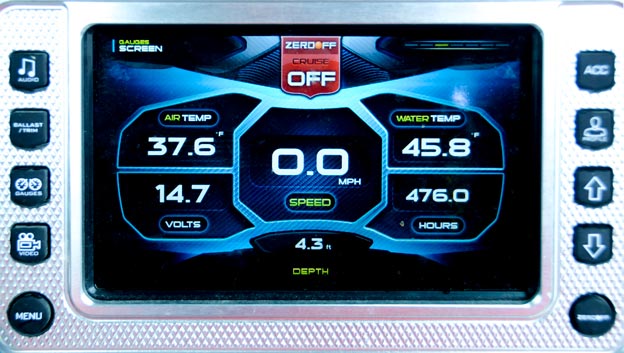Advanced, Novice, Setup, Water Temperature
Cold Water Skiing
There may not be a more controversial topic in the water ski world than how to best adjust a ski for really cold water. Not to worry, I’ve got it totally figured out. All you have to do is . . . (insert magic bullet here). Sorry, it’s just not going to be that easy.
There’s a lot of controversy on this topic for two very good reasons. First, there’s a general lack of understanding as to what actually changes when the water gets cold. Second, most temperature-related setup compensations tend to be trade-offs between regaining lost width in the course and restoring lost smear around the buoys. Unfortunately, these trade-offs affect different skiers in different ways depending on their personal skiing strengths.
When a trade-off that helps one skier makes matters worse for the next skier we get controversy. More specifically, when the problem isn’t clearly defined, two different skiers with two different problems may find relief with two completely different adjustments; leading both to assume they’ve just proven their adjustment to be the universal cure for the cold water blues. And if both of these skiers are reputable skiers, both will be widely quoted as unassailable references for these opposing cold-water cure-alls.

Both of these skiers and both of their fixes can be totally legitimate; the confusion is really a matter of context. Fin Whispering clarifies the cold water context by outlining fundamental changes to the water, ski, and the skier; and the effects these changes have on the way the ski interacts with the water. With this information, each individual skier can diagnose how the cold water is affecting their personal skiing, and come up with the most appropriate solutions for their unique circumstances.
A list of universal cold-water adjustments just isn’t practical given the wide range of skier’s issues and abilities. The good news is that while in some cases, a small amount of relief can be found through a few simple setup changes, for the most part, a ski that is properly set up for warm water, will usually remain properly set up in cold water, and that a ski properly set up for cold water will always remain properly set up in warm water. Major setup changes that are not driven by a sufficient understanding of the dynamics in play will just make cold water skiing worse.
Fin Whispering will explain in detail why most of the time, and for most skiers, the best cold-water setup is the one that was working for you all summer long. Your best cold-water results will come from staying as warm as possible, and by overcoming the cold, firm, water’s elevated viscosity by skiing more powerfully and more precisely . . . (and with a little less wing).

SkiJay
![]()

